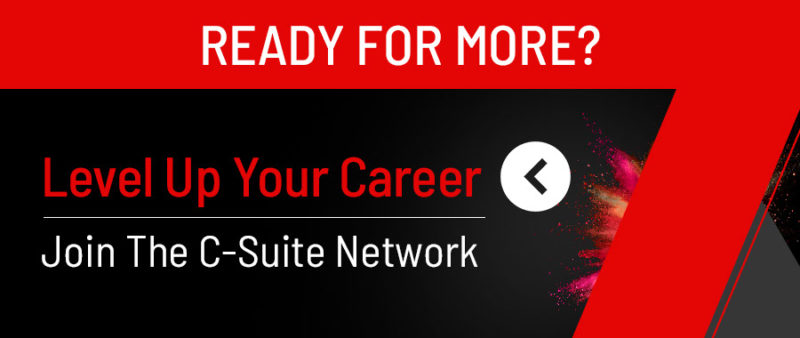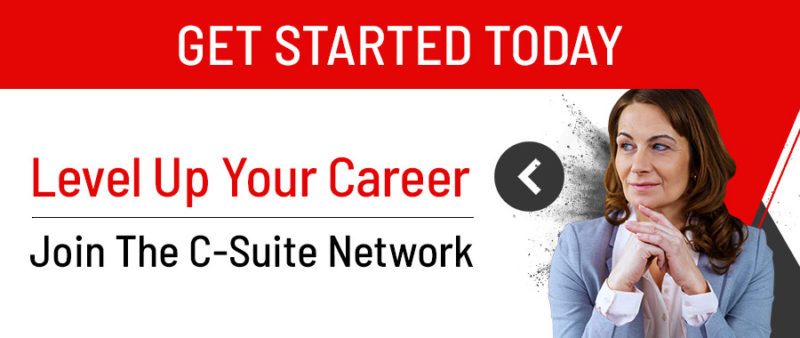

By Danna Olivo
Maneuvering a Disruptive Economy Using Critical Agile Thinking
Maneuvering a Disruptive Economy Using Critical Agile Thinking https://csuiteold.c-suitenetwork.com/advisors/wp-content/uploads/sites/5/2022/07/Agile-Thinking-1024x442.jpg 1024 442 Danna Olivo https://secure.gravatar.com/avatar/f65b1e2c7fa671a19a60db374451a1e3?s=96&d=mm&r=gAre you prepared for the next recessive wave to hit our economy? Perhaps it’s time to take a step back and look at your business through new eyes…Agile eyes.
A quick Google search will tell you that agile means being able to move quickly and easily—most often with grace and poise. Taking into account the broader concept, being agile covers not only the physicality of things but also have a quick, resourceful, and adaptable character.
What Is Agile Thinking?
Agile Thinking means embracing the “agile values” declared by agile software evangelists, such as flexibility, speed, customer responsiveness, change, and sound engineering. There is a notable difference between doing agile and being agile. Doing Agile means following process and ticketing boxes.
Being Agile is utilizing the agile model to become the best product development and management organization in the market. Agile Thinking encourages us to think of the users first. It is an iterative approach to providing high value for the user based on feedback and change. Shift from decision making to discovery, embrace new leadership models, understand that ideation and innovation occur at all levels, and bring lean and smooth operation to the entire organization through Agile Thinking.
Here are situations where Agile Thinking works best:
- You lack information to determine the time you’ll need and don’t know the full scope of requirements
- Lacks visibility on whether there’s a need on the market for your software
- Trial and error in designing are needed to map out the business needs
- You have access to customers who are ready for extensive involvement
- Neither you nor your client has a complex bureaucracy that delays decision-making
- Clients don’t have a fixed budget/schedule
- You need to capture the market before there’s any competition
Companies resort to adopting the Agile model of thinking because it allows them to deploy software quicker so that their customers can get value sooner rather than later. It also provides fewer wastes when it comes to resources because they always work on up-to-date tasks.
Since companies can adapt better to change and respond faster, this results in faster turnaround times higher, profit margins and rapid scalability. Companies also spend less time on bureaucracy and busy work.
Most importantly, companies can detect and fix issues and defects faster.
How to Introduce Agile Methodology to Your Business
Introducing the Agile Methodology for the first time to your organization may seem like a huge challenge, but like with all hurdles, the first step is usually the hardest thing to do.
Here are a few tips that might help your first step towards transitioning to Agile Methodology more manageable:
First, you have to define your business needs before introducing agile. Before jumping the gun into the whole Agile Methodology, it might be wise to determine if your company can gain anything from the agile principles. Ask yourself the question: Why should we change, and what do we gain from it?
Many times, it’s helpful to hire an experienced agile consultant. The right consultant brings in-depth knowledge of agile so that you can make a well-informed decision. Together with the consultant, you can clarify where and what your market advantage would be by introducing agile. However, don’t only look at the market advantage since agile also improves the internal dynamics of many organizations.
Next, instead of mandating Agile Methodology right away, consider prescribing it first. Frame it as a cultural practice and a mindset for approaching work. Applying Agile to non-software projects will bring additional value to your business and should not be treated merely as a trend.
Teams not involved in software development usually have specific requirements that are not easily met with Agile Methodology right away. However, certain elements will advance your existing workflows and move your team towards embracing Agile Thinking in just a few weeks of practicing it.
Your end goal here is to integrate Agile culture to help increase employee independence, trust, and personal responsibility. In a traditional environment, management ends up being responsible for both failures and successes. In an Agile environment, accountable individuals shoulder this responsibility.
Lastly, when transitioning to Agile principles, do not expect the whole organization to embrace it overnight. For far-reaching changes, it might be best to start small, bottom-up, and then watch it grow in time.
Avoid introducing agile as an imposed top-down organizational change. With agile, one size doesn’t fit all. Furthermore, a big top-down introduction squarely goes against its iterative process, with lots of room for experimentation and change.
How can you transition into a critical thinking business mindset and get everyone up to speed?
Embracing Agile Thinking in your company is an iterative process, meaning it’s something best learned through constant practice. While it’s reasonable for some departments in your organization to be not Agile-ready (or compatible), still, there are probably a lot more departments in your organization where Agile works best. For these departments, it’s important that they’re up to speed.
To get your organization in line with your agile team, they must first get on the same page. Agile is an iterative process, and as such, it needs everyone’s cooperation to produce optimal results. If not, there will be delays when introducing them to the broader organization. Your senior management needs to ensure this. Second, there should be an Agile leadership team. The existence of such a team (preferably composed of senior managers and influencers) can monitor the implementation of Agile, fix issues, and smooth tensions between the agile teams and the traditional organization.
Third, managers need to veer away from their traditional, detached approach and learn to be more “engaged and emotional.” For example, instead of giving instructions, you’ll use real experiences and leadership storytelling to change their perspective, attitudes, and values.
Lastly, it’s better to lead by example and “walk the talk.” Start to lead by asking questions instead of handing out orders and instructions.
Conclusion
Agile sparked innovation in the software sector and is now doing the same for other areas and industries. Companies can reap enormous benefits from introducing agile methodologies in their organization. However, to do agile right, you need to understand what agile can achieve for your organization and how you can best make it work.
If you would like to find out more about how to incorporate Agile Thinking and Methodologies into your business set up a 60-minute 1-on-1 meeting with Danna Olivo to explore possibilities.



